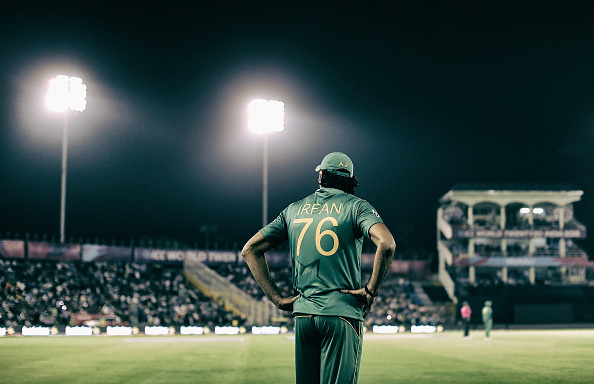
Deciphering the fielding postions in Cricket: Fine Leg

One of the most conventional fielding positions on a cricket field is the fine leg. A fielder can be seen positioned at fine leg at most stages of the game in all the three formats and in any context of the game, it is a very vital position.
The fine leg position lies in the area towards the leg side and behind the batsman. When a fielder is inside the 30-yard circle in that region, he is termed to be fielding at short fine leg but when on the boundary, he is known to be at the conventional fine leg.
Origin of the term fine leg
The term ‘fine’ means ‘straight’ i.e., nearer to the line that can be drawn between the stumps of the strikers’ and non-strikers’ end. If a batsman hits the ball bowled nearer to his leg ‘square’ on the on-side, it would be fielded by the ‘square-leg’ position and if his hit is finer, it would go towards the direction of ‘fine-leg.’
Another origin of the term fine leg comes from the fact that most shots towards that region are affected off the inside edge and not off the middle of the batsman’s bat and hence goes fine.
A run-saving and an attacking position
The position of the fine leg is mostly a run-saving position. Bowlers many times stray down the leg side and just a tickle from the bat can run towards the boundary and this is when a fine leg fielder comes into play. Fielding captains usually keep a fielder at the fine leg boundary as a security for the bowler, especially pacers.
At times, it becomes an attacking position when a fast bowler bowls short and a mishit or a top edge can lead to a catch straight to the fine leg. For a spinner, the short fine leg turns into an attacking position when a batsman attempts to play a sweep shot and if the ball bounces more than usual, a top edge gives a catching opportunity to the fielder.

Usually, the fielder who is not so acrobatic is stationed at the fine leg boundary as not too many balls are headed there. Even if shots are hit in that region, the fielder has enough time to stop that unlike other positions like point or cover where better fielders are placed.
It is also popularly known as a resting region for the bowlers. After bowling an over, a bowler is sent to field at fine leg to rejuvenate and be fresh for the next over. There he finds the comfort of having drinks as well as not having to worry about charging in towards the batsman as the bowler delivers.
Fielders who used to field at fine leg
Although there are no specialist fielders at this position, some bowlers Malcolm Marshall, Glenn Mcgrath and Muttiah Muralitharan have been famous for standing there for a large part of their careers.
As it is quite obvious, a bowler after spending the energy in bowling an over needs to relax and fine leg or even third man are the ideal positions for him to field. Traditionally, fast bowlers field in that position as not too many of them are known for their agility in the field.
Memorable moments at fine leg
In Indian cricket, one of the most precious wins in cricketing history was scripted by a catch at short fine leg. The final of the inaugural T20 world cup 2007 was being played at the Wanderers, Johannesburg. Batting first, India had scored 157 runs in 20 overs courtesy 75 runs from Gautam Gambhir.
Batting second, Pakistan had lost heaps of wickets and was heading towards a loss. But Misbah-ul-Haq kept them in the hunt with a marvelous innings and took them to a potentially winning position. Pakistan needed 13 runs off the last over with one wicket in hand and the Indian skipper MS Dhoni gave the ball to Joginder Sharma.

Misbah lofted him over long-off for a six to bring the equation down to 6 runs from 4 balls. He then attempted to play a scoop shot off the ball that was bowled outside the off stump but only managed to hit it as far as the fielder Sreesanth who took a comfortable catch and India became the inaugural T20 world champions.
Another famous occasion came in the semi-final of the Champions Trophy in the year 2002. India was taking on South Africa at Colombo and had set a target of 262 for the Proteas to chase. In the 39th over of the innings, Harbhajan Singh bowled to Jonty Rhodes who in an attempt to sweep got a top edge which went in the air.
Yuvraj Singh who was fielding at short fine leg ran towards his right and took a superb catch with a full-length dive. The match turned in India’s favour which went on to win and qualify for the final.